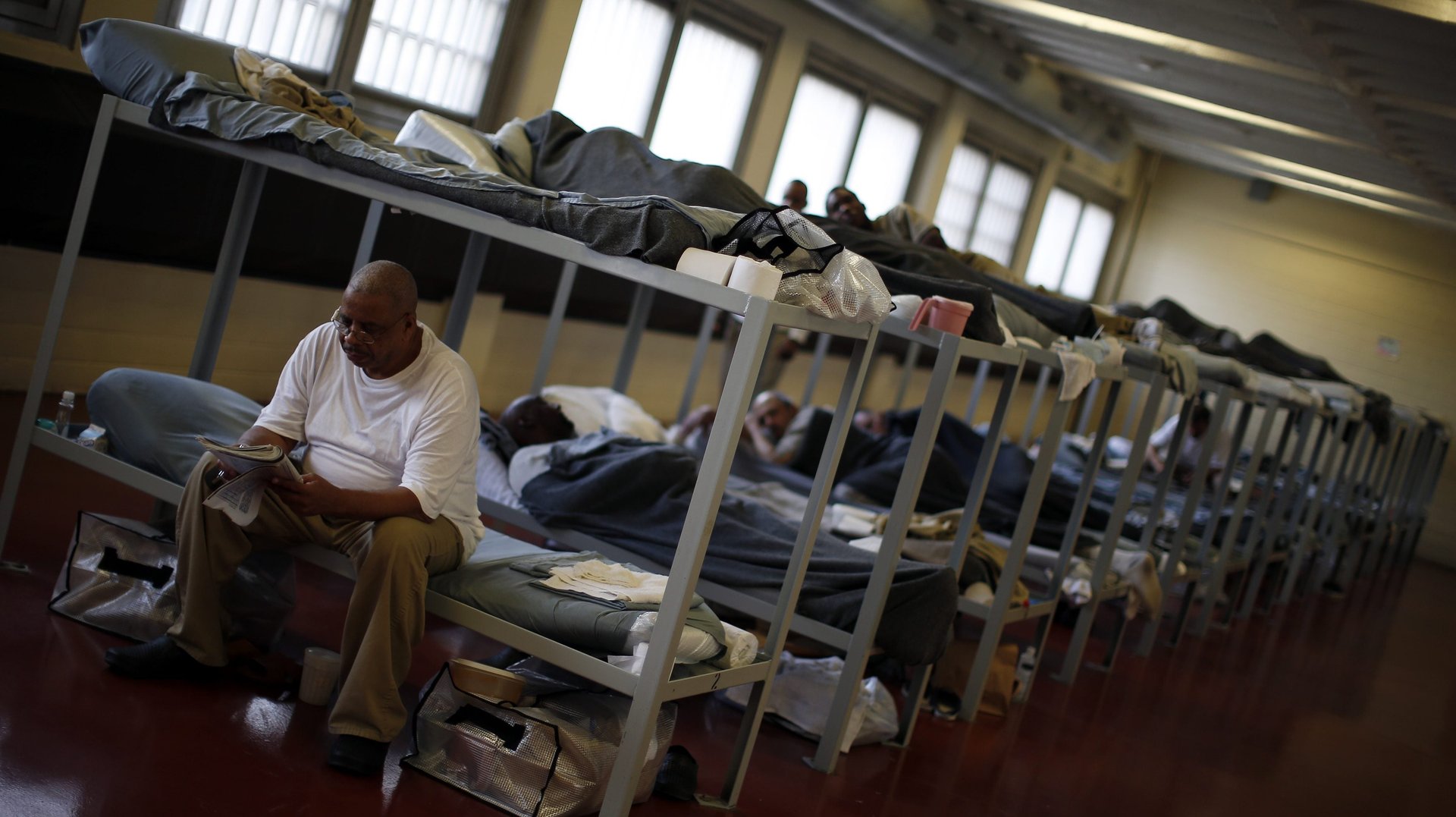The origins of Covid-19’s racial disparities lie in America’s prisons
The US recorded one of the world’s largest Covid-19 outbreaks in relation to its population, with about 10% of Americans contracted the disease, far more than the global average of 2.2%. But in its prisons, that percentage was nearly four times higher: through April 1, at least 39% of the incarcerated population in the US had been infected.


The US recorded one of the world’s largest Covid-19 outbreaks in relation to its population, with about 10% of Americans contracted the disease, far more than the global average of 2.2%. But in its prisons, that percentage was nearly four times higher: through April 1, at least 39% of the incarcerated population in the US had been infected.
The incarcerated had a 5.5 times greater risk of Covid-19 infection and three times greater risk of death compared to the rest of the population.
This is one of the root causes of the enormous racial disparity among Covid-19 patients in the US, according to a study published May 25 in the journal Proceedings of the National Academy of Sciences. Hispanic and Black people in America are about three times more likely to be hospitalized due to Covid-19 than the general population, and about twice as likely to die from it, data from the Centers for Disease Control and Prevention show.
From the jail to the community
It’s not surprising the incidence of Covid-19 in jails would be so much higher than in the general population. The US has the most incarcerated individuals in the world (about 2.2 million) and the highest rate of people in jail or prison in proportion to the population of any large nation. Correctional facilities are overcrowded and have long been the theater of contagious disease epidemics, from tuberculosis to influenza, to HIV.
But Covid-19 showed how the carceral system is a driver of infections not just within prisons, but in the broader communities to which inmates and jails are connected, says Eric Reinhart, a physician and anthropologist at Northwestern University and researcher with the World Bank.
At any given time in the US, about 600,000 people are held in local jails prior to trial and detained for only a few days. “Jails are not places where you lock people up and then they’re separate from the community. They’re in constant interrelation with communities,” says Reinhart. “There is a 55% turnover in the jail population every week on average, about 11 million admission-release cycles a year,” he says.
Add the correctional staff who work in the facilities and then return home, and it’s easy to understand how jails didn’t just become incubators of large Covid-19 outbreaks, but vectors from which the virus spread into the surrounding communities.
“This is not the fault of the individuals,” says Reinhart. “It’s the fault of a system that forcibly transforms people into hazards to those that they love.”
Quantifying the impact
Reinhart and his co-author Daniel Chen, a professor at France’s Toulouse School of Economics, were able to quantify the impact of the prison system in the Covid-19 epidemic starting with data obtained from the Cook County Jail in Chicago.
For every individual that cycled through the jail in March there would be five attributable cases in their zip code of residence by August, they found. Overall, people cycling through the Cook County Jail in March could be linked to 13% of all cases of Covid-19 in Chicago.
This impact is much higher among Black and Hispanic communities, which are overrepresented in prisons and jails.
About 90% of the jail population in Chicago is Black or Hispanic, and as a result, the research found, 86% of the increase in disease burden connected to jails occurred in zip codes that had a majority Black and Hispanic populations.
The US correction system as a public health hazard
Understanding the role of jails in the spread of Covid-19 sheds light on a rarely considered aspect of the prison system: its impact on public health.
“Historically we’ve studied people who are incarcerated and their health, and then community health as if these are two separate things. But in a system where there is so much volume of flow between our facilities and communities, these two things—community health and health inside these facilities—they’re never separate,” says Reinhart.
Because of this, he says, reducing prison populations should be considered from the lens of public health, and not just the rights of prisoners. As the US takes stock of the lessons of the pandemic, ensuring that jails do not play a deadly role in the next health emergency is paramount.
“If we do not address the way that the US carceral system puts the United States of America at a really distinctive, unique risk of epidemic outbreaks, then the next time we’re faced with a pandemic, we’re going to see a repetition of what’s just happened,” says Reinhart.